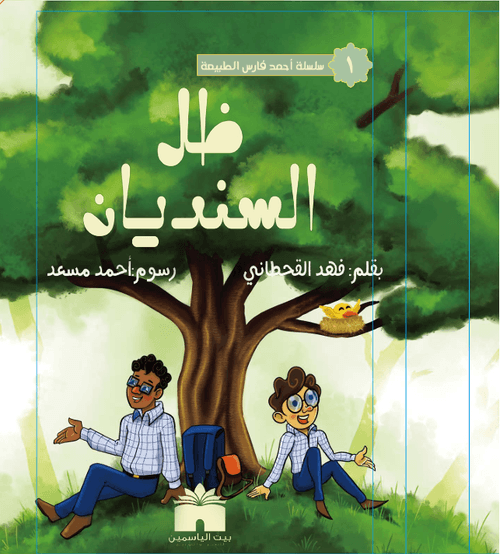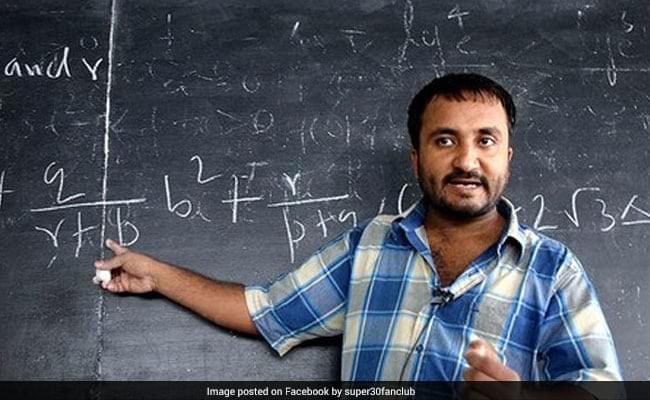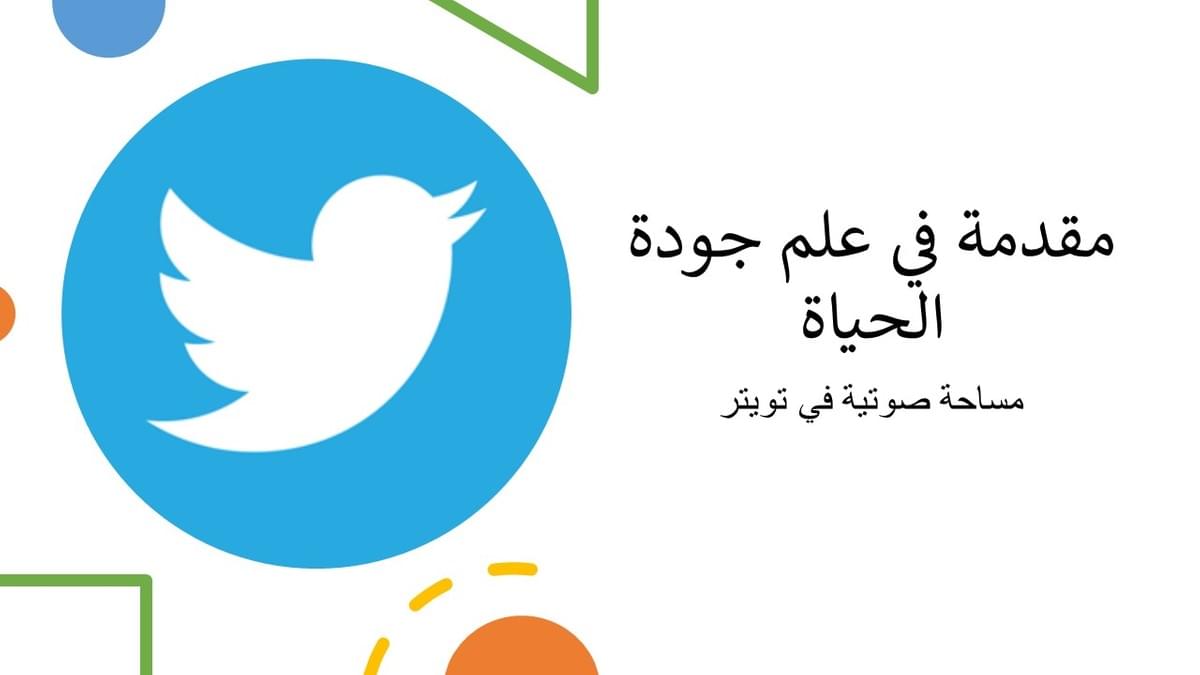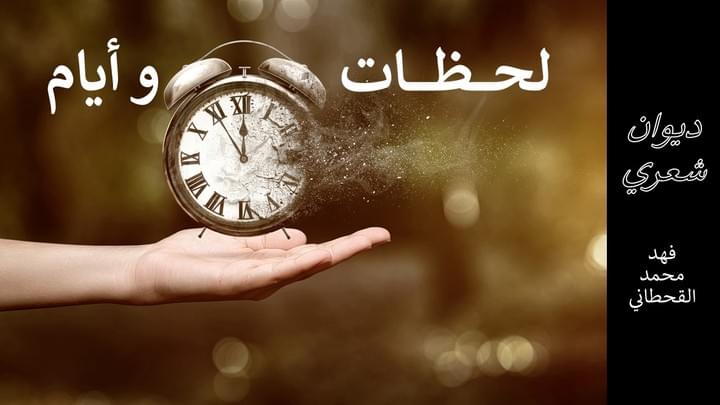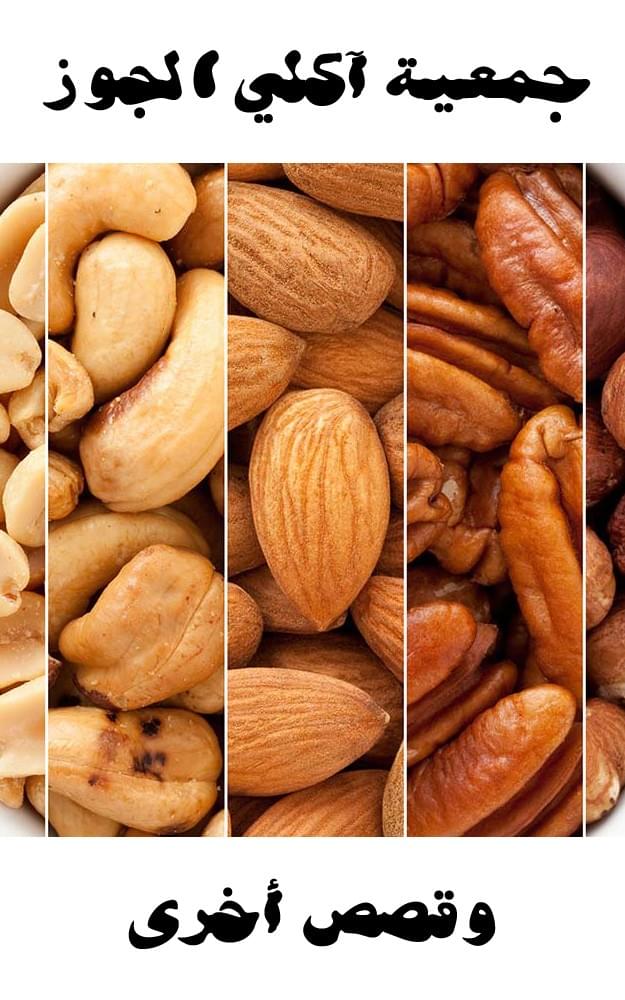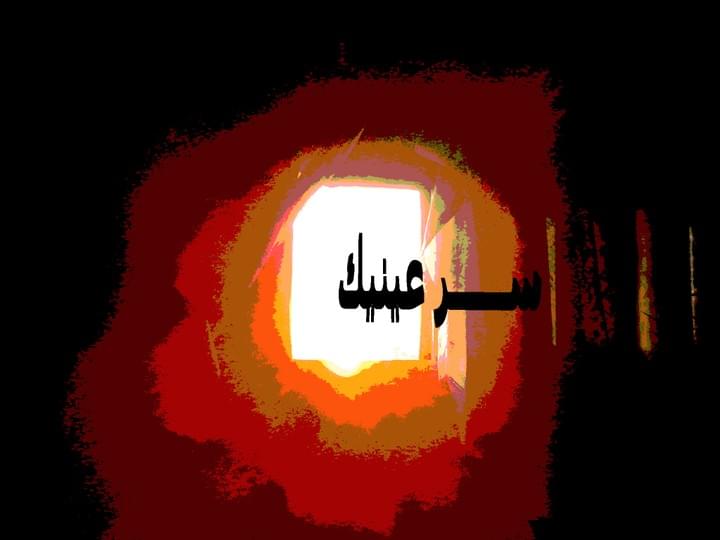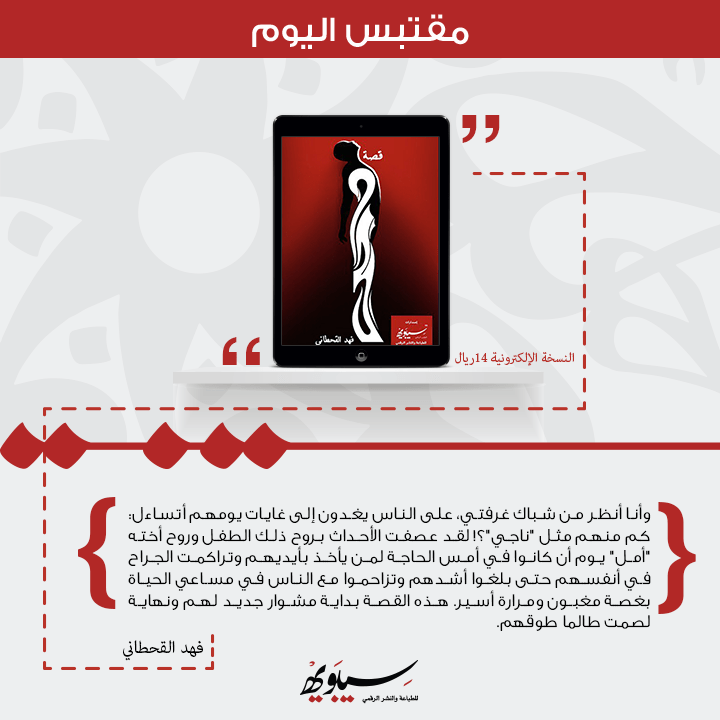



- …



- …

Buy My Not-For-Profit Publications
Restore your clarity of goals in six sessions!
When your problem is someone else' solution of another problem.
When you face a problem at work, is it better to focus on problem solving or pain caused by problem?
Choosing executive coaching compared to life coaching.
.Previous achievements can build up our confidence and can hinder our creativity too.





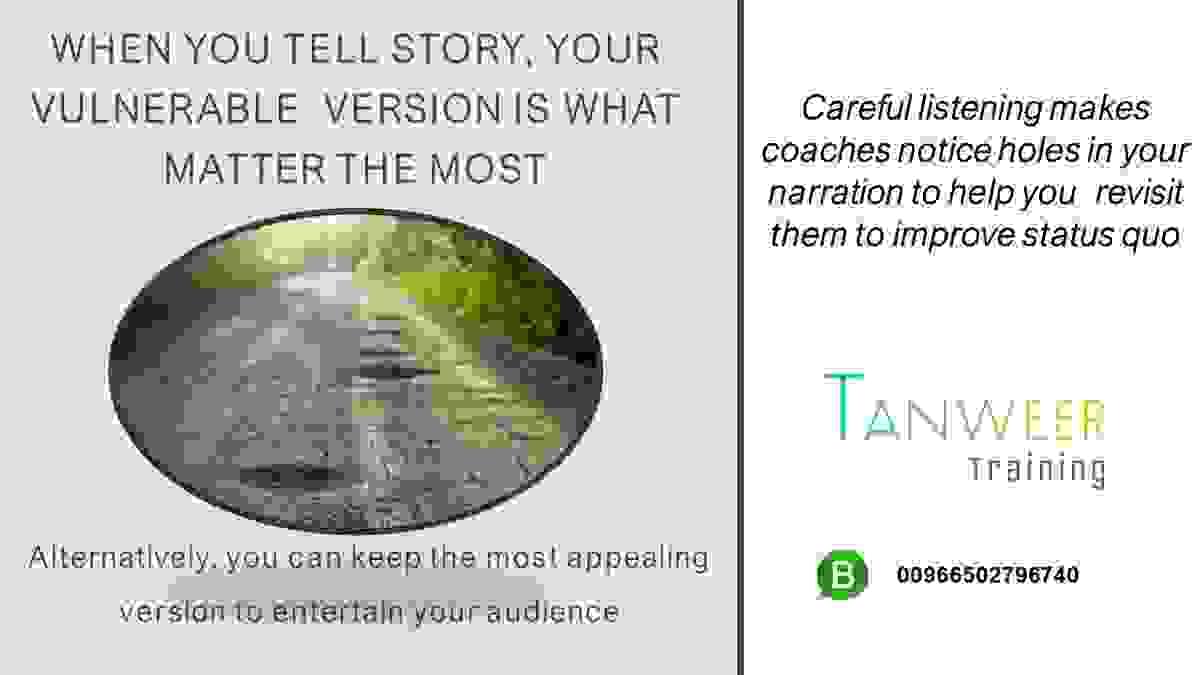
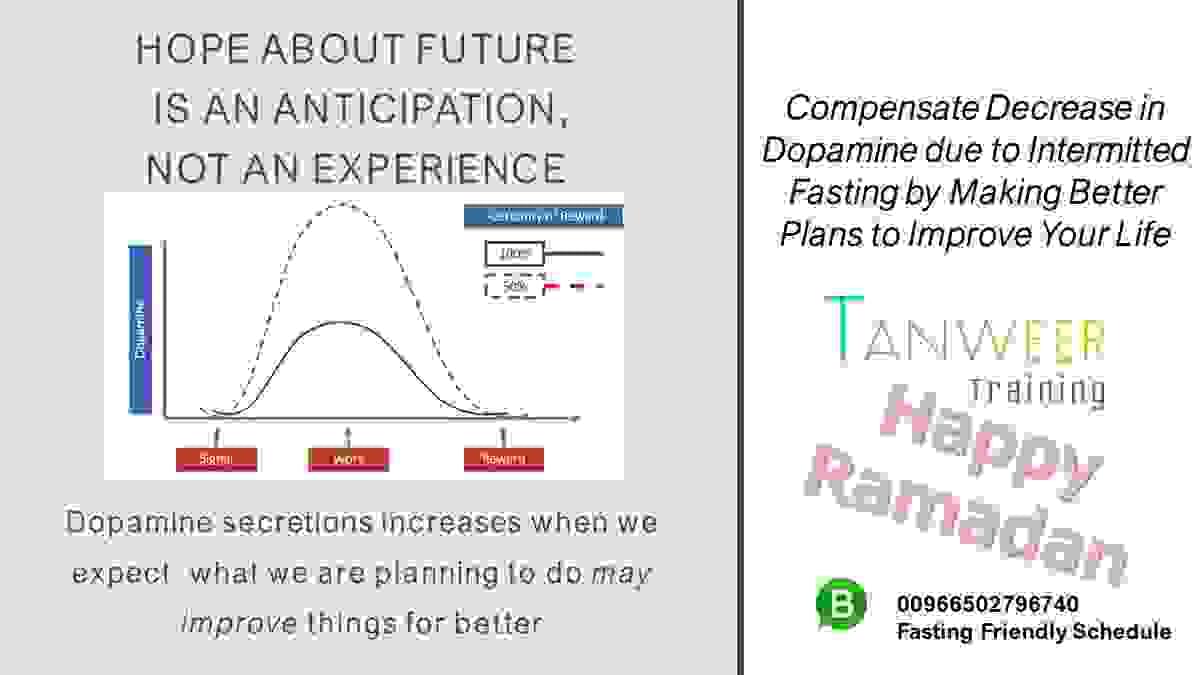

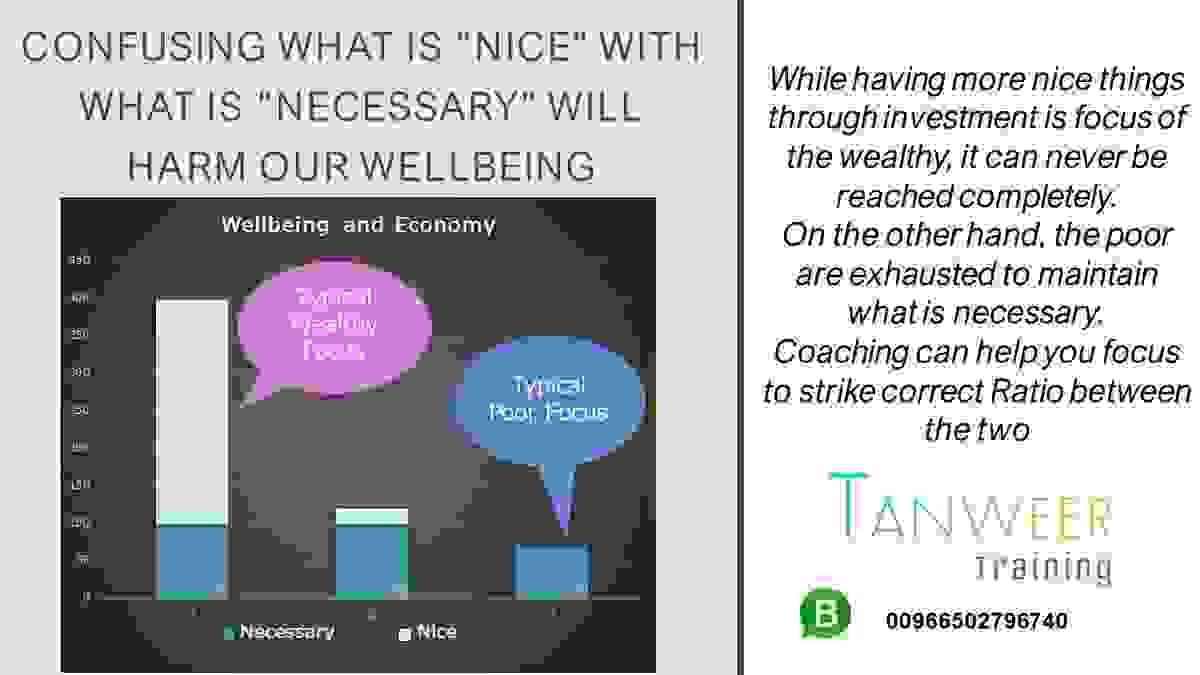
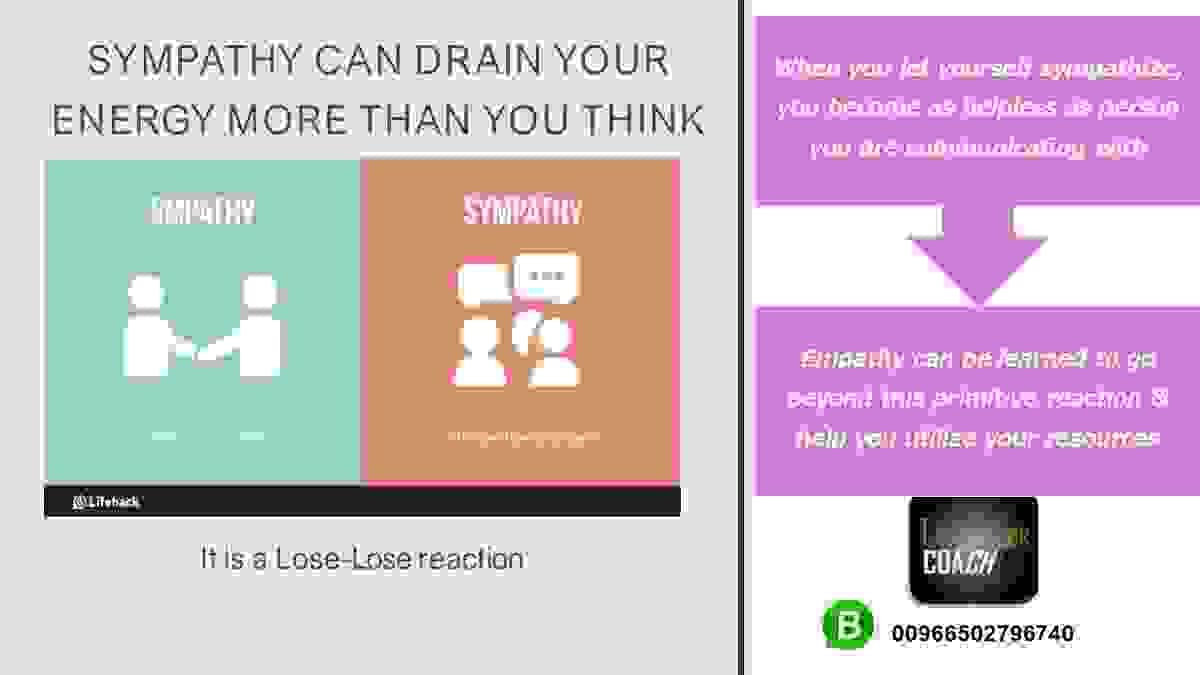
Performance Management Solutions
Digital Transformation Essentials for Organizations
Overcoming Cultural Barriers
Critical Thinking as Business Tool
Optimizing Genders Engagement
Self-Defence for Working Females
Whatever you do, master small tips that will boost you self confidence
Use your handbag tools to protect you at almost any situation
Two Day- Workshop
Check this Video
What's New?
Contact Tanweer
Heroes
Marie Curie and the Discovery of Radioactivity Mary Caballero
March 19, 2016 Submitted as coursework for PH241, Stanford University, Winter 2016 Introduction Fig. 1: Marie Curie in her late 30s. of her husband, Pierre. (Source: Wikimedia Commons) -Marie Curie, shown in Fig. 1, devoted her life to her research and her family. She discovered two new elements, radium and polonium, and was the first women to win a Nobel Prize. She is also the only woman to win two Nobel prizes in different fields, namely chemistry and physics.
Early Life and EducationMarie Curie was born in Warsaw, Poland in 1867 to a family of seven. She was a bright student who excelled in physics and math, like her father, who was a math and physics professor. [1] After secondary school, Curie hoped to further her education. While a brilliant and curious student, the University of Warsaw only admitted men and Curie was therefore unable to attend. Curie's sister, Bronya, also hoped to attend additional schooling. As such, they each worked to put the other through school, taking turns on who studied and who worked. In 1891, after Bronya finished school, Curie moved to Paris. There, she attended Sorbonne to study physics and mathematics. After years of schooling, Curie began her life and research in Paris.
Research and RadioactivityCurie received a commission to conduct research post graduation, and found lab space with Pierre Curie, a friend of a colleague. He was also a professor at Sorbonne. The Curies were married two years later. At the start of their relationship, Pierre and Marie worked on separate project, but after the birth of their first child, Pierre began to conduct research with Marie on x-rays and uranium. Curie was studying uranium rays, when she made the claim the rays were not dependent on the uranium's form, but on its atomic structure. Her theory created a new field of study, atomic physics, and Marie herself coined the phrase "radioactivity." She defined radioactivity at the time to be this activity of rays to be dependent on uranium's atomic structure, the number of atoms of uranium. Marie and Pierre spent time working with pitchblende. Pitchblende is a mineral that is the crystallized form of uranium oxide, and is about 70 percent uranium. (Also used in 1789 in the discovery of uranium). Marie and Pierre discovered not only polonium, but also radium, through their work with pitchblende. In 1903, Marie Curie and her husband won the Nobel Prize in physics for their work on radioactivity. She was the first woman ever to receive a Nobel Prize. Just three years after winning the Nobel Prize, Pierre was killed in an accident. Despite being a single mother of two and a widow, Marie Curie continued her research as well as teaching, as she took over Pierre's teaching position at Sorbonne. In 1911, Curie won her second Nobel Peace prize in chemistry.
X-RaysMarie Curie not only made huge contributions to the fields of physics and chemistry, but also to the world of medicine. Curie had studied x-rays and x-ray machines in her past research and upon the start of World War I in 1914, she made advances in this field. [2] Curie worked on the X-ray machine discovered by German scientist Wilhelm Roentgen in 1895. She used her newly discovered element, radium, to be the gamma ray source on x-ray machines. This allowed for more accurate and stronger x-rays. She also created smaller and portable x-ray machines that could be used by medics in the field. IN this way she saved many lives and supported the war effort through her work.
DeathIn the 1920s, Curie's health began to deteriorate rapidly. While now, it is common knowledge of the noxious nature of radium and the affect radioactivity has on the human body. But, Marie was not aware of this knowledge. It is said that in her lab, Marie would carry tubes of radium in her pockets. Therefore, the unknown danger of her actions as well as years of close contact with radioactive material, it is no surprise Marie Curie suffered from leukemia late in her life. This high-energy radiation took its toll, and on July 4, 1934, Marie Curie passed away. Her legacy lived on through her eldest daughter Irene. Irene Curie studied in her parent's Radium Institute. She, as well as her husband, was later awarded a Nobel Prize in chemistry for the discovery for artificial radioactivity.
© Mary Caballero. The author grants permission to copy, distribute and display this work in unaltered form, with attribution to the author, for noncommercial purposes only. All other rights, including commercial rights, are reserved to the author.
الشيخ الصاوي شعلانيوليو 2016د.خالد محمد عبدهإن لم تكُنْ بك للغريبِ هدايةٌ
طال الطريقُ على الغريبِ النائي
أنا قاصرٌ عن وصفِ ما أوليتني
يا رب من نعمٍ ومن آلاء.
«مناجاة.. الصاوي شعلان»
يذكر أبو الحسن الندوي في كتابه (مذكرات سائح) أنه في أثناء زيارته لمصر عام 1951م، استعان بالشيخ الصاوي شعلان (1320 هـ- 1403 هـ/ 1902 - 1982م) ليترجم له شعر إقبال من الأوردية إلى العربية؛ ليستشهد به في محاضراته في المحافل التي كان يُدعى إليها. يقول الإمام الندوي: «الأستاذ صاوي شعلان له شغفٌ عظيم بالثقافة الإسلامية الهندية، يعرف الفارسية ويحفظ لإقبال شيئا كبيرًا في ترجمة رسالته إلى الأمم الإسلامية التي تعرف (بس جه بايد كرد) أي «أقوام شرق» ولا شك أن هذه المنظومة رسالة جامعة وفكرة مركزية لإقبال قد جاء فيها بكل ما يريد أن يقوله للأمم الإسلامية فوفق الله الأستاذ الصاوي لترجمتها وله قدرة على ترجمة الشعر مع أن ذلك من أصعب الأشياء ومثل الأستاذ الصاوي يستحق أن تستعين به الحكومة والمجامع العلمية على الأقل في نشر فكر إقبال في العالم العربي.بطاقة حياة
وُلد الصاوي شعلان في ريف مصر، بقرية - سبك الأحد - مركز أشمون بمحافظة المنوفية، وفي صباه أصيب بحادث أفقده بصره، وأتمّ حفظ القرآن في العاشرة من عمره، والتحق بالأزهر الشريف، وفيه تخرّج، ثم التحق بمعهد اللغات الشرقية بالجامعة، وبعد حصوله على الدبلوم العالي عكف على تعلّم اللغات، وأتقن طريقة «برايل» للخط البارز، التي مكّنته من إتقان عدة لغات هي: الإنجليزية، والفرنسية، والألمانية، والتركية والفارسية، والأردية، وانكب على استيعاب ذخائر هذه الآداب؛ فترجم الكثير من قصائد شكسبير، وسعدي الشيرازي، وإقبال، وجلال الدين الرومي، والعطار، وطاغور.
كتب الشيخ الصاوي شعلان عن شخصيات عدّة من شخصيات التصوف الفارسي، بعد أن خصص جزءًا من مقالاته للسيرة النبوية، التي شغلته وقتًا طويلاً فاستدعى من دروسها الكثير في مقالاته، ولم ينس انشغاله بالشخصية المحمدية وهو يترجم قطوفًا من حدائق التصوف، وسنذكر هنا عنوانات بعض مقالاته التي اهتم فيها بالتصوف وأعلامه من الشعراء حتى يعتني بها من لم يعرف عن هذه الشخصية سوى أن السيدة أم كلثوم أعجبت بترجمته لقصيدة - حديث الروح - لشاعر الشرق محمد إقبال فغنتها وظل اسمه مرتبطًا بهذه الشخصية فحسب.
الصاوي شعلان ومحمد إقبال
استفاد محمد إقبال كثيرًا في أشعاره وفلسفته ورؤيته للإسلام من دروس مولانا جلال الدين الرومي، والمطالع لأشعاره يرى أثر المثنوي واضحًا فيه، على سبيل المثال يذكر إقبال في مقدمة ديوانه أسرار خودى - أسرار الذات - أن جلال الدين الرومي هو الذي أيقظه ونبّهه ودعاه أن يسلك هذا السبيل، ويقصد هذا القصد ويشيع في الناس بيانه، ويبلغهم رسالته وهو يعترف لجلال الدين الرومي بالإمامة في كثير من أبيات الديوان. فالقطبَ الرومي هو المرشد وصاحب الضمير الصافي، هو أمير قافلة العشق السكران، علا مقامه القمر والشمس، يجعل من نهر المجرة حبلا لخيمته، لقد استقر نورُ القرآن في صميم صدره ، فغدا «جام جمشيد» خجلا أمام مرآته، أنّي لموجٍ يقيم منزله في لجة بحره، أنا ذاك الذي أوالي السكرة بعد السكرة من صهبائه. ويقول في نصٍّ آخر:(إن الذي أضرم بنار شعلته هشيم قلبي هو المرشد الرومي، القائل منزلنا كبرياؤنا). وحينما ينظم إقبال بعد فترة (جاويد نامه) رسالة الخلود ويقصّ فيها أحداث رحلته الرّوحية ومعراجه السماوي يجعل جلال الدين بمثابة جبريل له.
الكتابةُ عن إقبال كتابة عن الرومي، وليس غريبًا أن يكون محمد إقبال بوابة الكثيرين للولوج إلى عوالم الرومي، فالذين كتبوا في الغرب أو الشرق عن إقبال كتبوا عن الرومي، ويمكن هنا أن نذكر نيكلسون وآربري وإيفا ميروفيتش وأنّا ماري شيمل وعبد الوهاب عزّام والصاوي شعلان وعيسى علي العاكوب.
كتب الصاوي عن محمد إقبال عدة مقالات، نذكر منها:
(فلسفة الحیاة في نظر إقبال- في ذكرى إقبال – إقبال والأمة العربية – مراحل تربية الذات عند محمد إقبال- إقبال يشكو إلى رسول الله- مختارات من ديوان إقبال والآن ماذا نصنع يا أمم الشرق- إقبال وأسرار الحياة- حزب الشيطان عند إقبال- إقبال والثورة الليبية) إضافة إلى ما كتبه بالاشتراك مع محمد حسن الأعظمي (الحياة والموت في فلسفة إقبال)، ونشره في حيدر آباد دكن 1945، وما ترجمه لإقبال من مثل: بس جه بايد كرد اى اقوام شرق، ومسافر(ماذا ينبغي أن نفعل يا أمم الشرق).
الصاوي شعلان والتصوّف
من بين أعمال الصاوي شعلان التي تستحق التحقيق والنشر جمعه لألف حديث من السنة وشرحه لها شرحًا بديعًا امتزج فيه التصوف بالأدب، ونذكر هنا نموذجًا حديثًا يُعبّر عن التصوف، فلطالما اهتم المتصوفة بشرح هذا الحديث والتعليق عليه، وجاء شرح الشيخ الصاوي له على النحو التالي:
قال رسول الله صلى الله عليه وسلم: «أفضل الإيمان أن تعلم أن الله معك حيث كنت». وفي الصحيحين أنه صلى الله عليه وسلم قال:«الإحسان أن تعبد الله كأنك تراه فإن لم تكن تراه فإنه يراك».
إن مراقبة المؤمنين الأولين لربهم هي التي جعلتهم ينظرون في ملكوت السموات والأرض، وما خلق الله من شيء ويتأملون في الكون كيف دبرها؟ وفي المقادير كيف قدرها؟ وفي المخلوقات كيف صوّرها؟ ثم تلين جلودهم وقلوبهم إلى ذكر الله فيتحلون من الإيمان بأنبل الصفات، ويقومون بجلائل الأعمال التي رفعت مكانتهم في الدنيا وبوأتهم منازل الكرامة في مقعد صدق عند مليك مقتدر.
إن استدامة المراقبة لله هي الوازع الحي الذي يوجهك إلى الخير في النية والقول والعمل، ويضيء سراج عقلك عند ورود الشبهات ويوقظ ضميرك عند هجوم الرغبات. فلا تتكلم إلا حين ترى للكلام موضعًا من الحق ومدخلاً من الصواب ولا تختصم مع كريم فتفقد مودته ولا سفيه فتتعرض لأذاه. وتخلف أخاك إذا غاب عنك بما تحب أن يخلفك به إذا غبت عنه، وإذا قدرت لم تأخذ ما ليس لك، ولا يجرئك الرضا على الباطل. ولا يخرج بك الغضب عن الحق، ويكون شعارك الخشية من ربك في السر والعلانية، والإنصاف من نفسك للعدو والصديق، والقصد والاعتدال في الفقر والغنى وأنت مدرك أن الإيمان لا يكمل إلا حين يكون لباسه التقوى وزينته الحياء وجماله الحلم وثمرته العلم. ومتى أدرك الإنسان جلال المعاني السامية في قوله تعالى: «وهو معكم أينما كنتم» [سورة الحديد: من الآية 4]. أمكنه أن يقول في كل صباح ومساء وفي كل شدة ورخاء وفي كل برّ وبحر وفي كل أمن وخوف. «إن معي ربي سيهدين» [سورة الشعراء:62]. إن الناس يكافئون عن الكثير بالقليل ولكن الله يكافئ عن القليل بما فوق الكثير، والذي تنتظر منه الجزاء الأوفى قد رآك فاعمل لمرضاته وحده وابتغ الزلفى عنده. والجانب الأبرز بالنسبة لاهتمامنا بحضور الرومي في الثقافة العربية، هو ترجمات الصاوي شعلان لمختارات من مثنوي الرومي، لا يعرفها الكثيرون اليوم، وغير مشهور عن الصاوي أنه سجل أطروحته للدكتوراه بجامعة القاهرة، في الخمسينيات، بعنوان «نظم ألف بيت من مثنوي جلال الرومي، مع التحليل والدراسة»، وبعد أن أنجزها، واجتمعت اللجنة العلمية لمناقشتها، ترك الشيخ الصاوي شعلان القاعة، وآثر الانسحاب في هدوء بعد خلاف مع اللجنة المناقشة! ومن أسف أنني لم أتمكن من الحصول على نسخة من هذا العمل، ولا أظن أن كتابه مختارات من مثنوي جلال الدين الرومي قد طُبع في حياته!
نذكر من مختارات ترجماته للمثنوي التي نُشرت في المجلات:
1 ـ قطعة بعنوان: الغرام.. الهادئ.. العنيف
قال لي المحبوب لمّا زرته.. من ببابي قلتُ بالباب أنا
قال لي أنكرت توحيد الهوى.. عندما فرّقت فيه بيننا
ومضى عامٌ فلمّا جئته.. أطرق الباب عليه موهنا
قال لي من أنت قلتُ انظر فما .. ثم إلاّ أنت بالباب هنا
قال لي أدركت توحيد الهوى.. وعرفت الحبّ فادخل يا أنا.
2 ـ قطعة بعنوان قَصْرُ عمر، ومنها:
عبرةٌ حارت لمعناها العقول.. عن رسول الرّوم في أرض الرسول
جاء يطوي البيد سعيًا والحضر.. يسأل الأحياء عن قصر عمر
أين قصر ضمّ خير المالكين.. والهدى والطُهر والنور المبين
قصره لا شك مرفوع البناء .. أنصفوا لو شيدوه في السماء
ومضى الرومي في شوق عظيم.. يسأل العابر عنه والمقيم
فأهاج الشوق منه والهيام.. صوت أعرابية بين الخيام
تحت ذاك النخل في حصن حصين.. حيّ فاروقًا أمير المؤمنين
فتخلّ عن جواد ومتاع.. تنشد الكنز المرجي في البقاع
قال يا سبحانه ربّ الوجود.. أين ذاك القصر وأين الجنود
لم أكن من قبل أخشى قيصرا.. لا ولا سطوة آساد الشرى
فلماذا أوهن الخوف جناحي.. من أمير نام من غير سلاح
قال بعضُ الناس يا ضيف العرب.. قصره فوق الدراري والذهب
منزلُ الأرواحِ صدقٌ ووفاء.. منزلُ الأجسام لونٌ وطلاء
في سماء المجد مرفوع المنار.. ركنه زهدٌ وذلٌّ وانكسار
لا تراه في الملا عين البصر.. بل تراه في العُلا عين الفِكر
التآخي فيه والعدل بناء.. ومباني الناس غشٌّ ورياء
كل من أغلق عينيه هواه .. فهو في الظّلمة حاشا أن يراه
من يخف سلطان ذي العرش المجيد.. خافه كل قريب وبعيد
وبخوف الله فاز الآمنون.. حيث لا خوف ولا هم يحزنون
ملك العرب جميعًا والعجم.. نائمٌ في غير جُند أو حشم
عبرة تُروى لجيل بعد جيل.. نام ظلُّ الله في ظلّ النخيل
كان الشيخ الصاوي يعرف أن بعض نصوص المثنوي تُنتخب وتُترجم وتقدّم للقارئ العربي، وقد سعد بذلك ورأى أن المثنوي يستحق هذا الاهتمام العربي به، وليس هناك مانع يمنع من تعدد المترجم لنص واحد، فلكل مترجم وناقل محاولة في تقصّي المعاني، ومذهبٌ في التصوير لأخيلة كاتب المثنوي باعتباره شعرًا، وإن التقى الصاوي مع بعض المترجمين في وقته، كـعبد الوهاب عزام وكفافي، إلا أنه لم يكن كغيره ملتزمًا بحرفية النصّ أو شكله في الترقيم والعدّ، ولم ينشغل كثيرا ببعض المصطلحات التي لا تلتقي مع الأسلوب العربي! ولعل هذا يجعلنا أمام نصٍّ إبداعي جديد له صلة قرابة بنصّ الرّومي، ولا يمكن أن نعتبره هو هو!
3 ـ من قطعة بعنوان قصة الأسد والأرنب:
أيّها السالك لا تكن عابدًا للصورة، فإن الإنسان وهو كريم على ربّه لا يمكن أن يقوم بصورته الآدمية وحدها، وإلاّ لاشتبه الناسُ بعضُهم ببعضٍ، ولتساوى الصالح والطالح، والبرّ والفاجر، وإذا شاهدت صورة منقوشة على الجدران فلا تبهرك براعة الفنان، وتأمل كم ينقص تلك الصورة من الصفات.. لقد أمعن المصوّر في رسمها وأحكامها وإبداع ملامحها، ومع ذلك فستبقى كما هي صورة لا غير، بلا روحٍ وبلا حياة!
الصاوي شعلان وسعدي الشيرازي
اهتم الشيخ الصاوي بنصوص سعدي الشيرازي كما اهتم بالرومي وإقبال، وقد نشر مختارات من أشعاره في الكتاب الذي ألفه بالاشتراك مع محمد حسن الأعظمي عن الأعلام الخمسة للشعر الإسلامي: (رومي وإقبال والعطار وسعدي وحالي)، كما نشر من قبل في عدة مقالات بعض ترجمات له، من مثل:
•خواطر منثورة منظومة من بستان سعدي، ومن نصوصها: إن الذي يحصي عيوب الآخرين أمامك، تيقّن أنه سيعلنُ عيوبك أمام الآخرين... النصيحةُ لا تُجدي مع الجلمود كالمسمار لا ينفذ في الجلمود... لو بُعث الميتُ من قبره ما ردّ عليه الوارثون تركته، ولأصبحت حياته أشد محنة من موته... لو اغترب العالِم عن موطنه لوجد في كل مكان وطنًا، ولو اغترب الأمير عن قصره لأعوزه القوت.
•صور رمزية لسعدي الشيرازي شاعر التصوف والحكمة، ومنها: يا بحرُ إني قد أتيتك راجيًا.. فاقبل فديتُك يا كريم رجائي.. أفني وجودي في وجودك راضيًا.. وأرى فنائي فيك عين بقائي. •من بستان سعدي...لسعدي كلماتٌ خالدة في باب الإحسان، تناول فيها البخلاء، وكشف الغطاء عن قلوبهم الجليدية وأيديهم الحديدية.. قال مرّة يصف أحدهم: ولو كان قرص الشمس فوق خوانه .. رغيفًا لما لاح النهار إلى الأبدويعد شعلان من أوائل من عرفوا الناس الأمور الدينية والثقافية في محطات الإذاعة الأهلية في العشرينيات والثلاثينيات من القرن العشرين، وبعد إنشاء محطة الإذاعة المصرية الرسمية كان من السابقين للحديث فيها.
الصاوي شعلان الأعمى الذي رأى كل شيء!
المصدر موقع الألوكة إشراف الدكتور سعد بن عبدالله الحميد - نشرت بتاريخ سبتمر 2012
...وطالما حدثته نفسه الطموحة لتذليل العقبات أمام المكفوفين؛ فسعى جاهدا لتأليف لجنة لكتابة «القرآن الكريم» بطريقة برايل، كأول عربي يفكر في هذا الأمر، ورَأس اللجنة، وكان أكبر إنجازاته على الإطلاق هو «طبع المصحف الشريف كله، بالطريقة المذكورة، التي أفاد منها الملايين».
مع هيلين كيلر!
وعندما زارت الكاتبة الأميركية المشهورة هيلين كيلر -الصماء البكماء العمياء لجمعية النور لرعاية المكفوفين بالقاهرة؛حياها شعلان بقصيدة للدلالة على قدرة الخالق جل وعلا، فقال:
رب عين لم تبصر النور يوما
أرسل الكون من هداها، الشعاعا
رب أذن لم تسمع القول لكن
حيرت من بيانهـا الأسمـاعا
هل رأيتم «هيلين» تقتحم
السبـــعين سنا، ولا تمل الصـراعـا؟
وتجوب الأقطار كالنجم في النور
وكالعطر في الربيـع مذاعـا
ولم يكتف الصاوي شعلان بذلـك، ولم يقف طموحه عند هذا الحد، فقد سجل أطروحته للدكتوراه بجامعة القاهرة، في الخمسينيات، بعنوان «نظم ألف بيت من مثنوي جلال الرومي، مع التحليل والدراسة»، وبعد أن أنجزها، واجتمعت اللجنة العلمية لمناقشتها، ترك الشيخ الصاوي شعلان القاعة، وآثر الانسحاب في هدوء؛ لخلاف حاد بينه وبين أستاذه، ولم تشفع الوساطات لثنيه عما عقد العزم عليه، تماما كما صنع محمود محمد شاكر (أبو فهر) في الربع الأول من القرن الماضي، عندما اختلف مع أستاذه طه حسين؛ فاعتزل الحياة والجامعة!
واكتفى هذا العبقري بالعمل واعظا في مصلحة السجون، وقام بتدريس اللغة العربية في المعهد العالي للموسيقى العربية، وتعليم المناهج التاريخية بالمركز النموذجي للمكفوفين بالزيتون بالقاهرة. وأشرف على رياسة تحرير مجلة «المصباح»، واشترك في عدد من الجمعيات الخيرية، كجمعية مكارم الأخلاق، التي عمل رئيسا لتحرير مجلتها ولجنتها الدينية. وأحيل إلى المعاش في عام 1963م، وهو بوظيفة مدير عام الوعظ والتعليم بمصلحة السجون، وأهدته مصر وسام الاستحقاق من الطبقة الرابعة، ومنحته محافظة القاهرة شهادة تقدير عام 1972م. وللشيخ شعلان مؤلفات، منها: كتاب «والآن ماذا نصنع يا أمم الشرق»، الذي ترجمه عن إقبال، وكتاب «مختارات من مثنوي جلال الرومي» لم يطبعا حتى الآن! وله ديوان شعر بعنوان «ينابيع الحكمة» أصدرته هيئة الكتاب المصرية، ومايزال ديوانه «من وحي الإيمان» داخل مخازن الهيئة نفسها، يشكو الإهمال! وأثناء زيارته للاهور، مر بقبر محمد إقبال، فجاشت نفسه بأبيات خالدة، قال فيها:
عجبت لنجم مشرق.. وهو غائب
ومحتجب، مازال يبدو ويظهر
ولم أر نجما قط بعـد احتجابـه
يزيد ضياء في العيون ويبهر
سل الجوهر المكنون في باطن الثرى
متى عاد للأصداف.. قبلك جوهر!
صلاح حسن رشيد - ناقد أدبيArunachalam Muruganantham
“The most difficult thing is changing people’s mindset. No man has ever died of poverty. Everything is because of ignorance. To break the age-old taboos and to see girls and women use pads was a difficult task,” revealed India’s Pad Man Arunachalam Muruganantham.
He recalls, “It all started for my wife Shanthi. Now, it has gone global and become a revolution. I am very glad and happy with where my mission has reached.”
Arunachalam Muruganantham was more concerned about his wife’s health, in spite of being a poor man. India’s Pad Man achieved one of the biggest successes in the world. His perseverance, strong belief to find a solution and never-to-give-up spirits, to ensure his wife does not resort to unhygienic ways like cotton, ash or rag cloth during periods, has made him a global figure.
Hugh Thompson
Savior of 11 innocents in crazy time of war
US pilot who tried to stop the My Lai massacre of civilians in the Vietnam war
Hugh Clowers Thompson Jr, pilot and whistleblower, born April 15 1943; died January 6 2006Hugh Thompson, who has died aged 62, was the helicopter pilot who tried to halt the My Lai massacre of more than 500 villagers by American troops during the Vietnam war. At one point, he rescued 15 defenceless civilians while training his machine guns on US infantrymen commanded by the infamous Lieutenant William Calley, threatening to shoot if they did not stop the slaughter.By the time he arrived in Vietnam in late December 1967, Thompson was a 25-year-old chief warrant officer reconnaissance pilot with the 123rd Aviation Battalion. On March 16 1968, he was flying his H-23 scout helicopter, with its three-man crew, over a part of Quang Ngai province known as Pinkville, supporting a three company search-and-destroy assault on several villages, which faulty intelligence had indicated were heavily defended by Vietcong troops. The US 1/20th Infantry Battalion attack was led by Charlie Company, commanded by Captain Ernest Medina, who sent in the 1st platoon, led by Calley, to clear out My Lai and several neighbouring hamlets.
Charlie Company was bent on revenge; days earlier several of its members had been killed by Vietcong mines and booby traps. Without a shot being fired against them, Calley's men began slaughtering anyone they could find - old men, women and children. Groups of villagers, 20 and 30 at a time, were lined up and mown down. In the four-hour assault, the men of the 2nd and 3rd platoons joined in.
Early on, Thompson spotted a young woman injured in a field. He dropped a smoke cannister to indicate she needed medical help; he claimed in a court martial later that Medina went over and shot her. During the massacre, Thompson discovered the bodies of 170 executed villagers in a drainage ditch. One of his crew rescued a child and flew it to hospital at Quang Ngai.
In another incident, he challenged Calley to help a group of civilians hiding in a bunker rather than attack them. When Calley refused, Thompson ordered his helicopter gunners to open fire on the 1st platoon if they advanced any closer. He then called down gunships to rescue the civilians.
On returning to Chu Lai military base, Thompson reported everything to his commanding officer. But a local inquiry whitewashed his complaints, claiming the civilian deaths had been caused by artillery fire. An elaborate cover-up ensued and Thompson was awarded the Distinguished Flying Cross for saving the lives of Vietnamese civilians "in the face of hostile enemy fire" - he threw the medal away, believing his commanders wanted to buy his silence.
A year later, the Pentagon learned the truth and a high-level inquiry was conducted by Lieutenant General William Peers. Thompson later appeared as a witness at the courts martial of several men involved in the massacre or the cover-up, though the only person convicted was Calley, who served a few months in jail before having his life sentence reduced and being given parole.
During his time in Vietnam, Thompson was shot down five times, finally breaking his backbone. He received a commission, but back in America some colleagues regarded him as a turncoat. When evidence of the atrocity was finally made public in late 1969, he was castigated by pro-Vietnam war politicians in Washington.
It was only 30 years later that Thompson was recognised as a genuine American hero by the Pentagon, after a nine-year letter-writing campaign. The US army had initially wanted his Soldier's Medal, the military's highest award for bravery in peacetime, to be presented quietly, preferring to keep what happened at My Lai in the background. But Thompson resisted. He wanted a ceremony at the Vietnam memorial in Washington, DC, and the bravery of his fellow crew members recognised as well. In March 1998, he finally got his wish.
Thompson was born in Atlanta, Georgia, to strict Episcopalian parents, and moved to nearby Stone Mountain when he was three years old. His father served with both the US army and navy during the second world war and spent 30 years with the naval reserve. His paternal grandfather was a full-blooded Cherokee Native American, forced off tribal land in North Carolina in the 1850s and resettled in Georgia. Thompson joined the US navy in 1961, and spent three years with a Seebees construction unit. After a brief return to civilian life in 1964, during which he became a funeral director, he re-enlisted in the army, as it was becoming engaged in Vietnam.
The My Lai experience affected him badly. He grappled with alcohol and had several failed marriages. After service in Korea, he returned to the US, dropping the name Hugh and calling himself Buck as a way of distancing himself from past events. He left the army briefly and then re-enlisted, flying with medical evacuation units and instructing trainee pilots. He retired from the army in November 1983 and worked as a helicopter pilot for oil companies in the Gulf of Mexico. Later he was involved with the Louisiana department of veteran affairs for six years, giving lectures to students and schoolchildren and speaking about ethics to military academies.
After his role in trying to stop the massacre was recognised in the US, Thompson and his surviving crew member, Larry Colburn, were taken back to My Lai, where they were introduced to three women who had survived the massacre. On a second visit three years later, he met an electrician from Ho Chi Minh City who, aged nine, had been one of the children Thompson had rescued from the bunker.
Thompson is survived by three sons and his partner Mona Gossen.
FactSheet on Richard's Work in Disability Employment and the ADA.
Richard Pimentel was pronounced dead at birth in the delivery room. In a miraculous turn of events, he lived. His mother, who had experienced three miscarriages before his birth, left him in an orphanage, unable to come to terms with his existence. After his father's death, he was raised by his impoverished grandmother and deemed "retarded" by a school guidance counselor. He never spoke a word until age six.
After his mother abandoned him again for a new boyfriend, Richard was left homeless and roamed from friend’s homes to his father’s old workplace, a strip bar. He lived and slept in the dressing room. During these hard times, he managed to win two national high school speech championships and was offered a college scholarship by College Bowl founder, Dr. Ben Padrow. Richard arrived on campus only to hear Dr. Padrow tell him to come back when he had "something to say."
Richard followed Dr. Padrow's advice and quit school. Soon after he was drafted to Vietnam, where he survived a volunteer suicide mission and became an acknowledged war hero. During his brief celebration, a stray bomb exploded in his bunker and ravaged his hearing. Not only did Richard lose his hearing, he developed tinnitus, a constant ringing in the ears. The government dismissed his dreams of college and public speaking, insisting his fate was one of insanity and rage due to his condition.
Richard refused to accept this fate. He returned to college where he met Art Honneyman, "the smartest and funniest man he has ever known," who just happened to have a severe case of cerebral palsy. No one could understand Art due to his wheezing, garbled speech—-except for Richard, who could hear Art’s true voice due to his hearing loss.
At 3 AM, in celebration of Art’s birthday, Art and Richard sat down in a local restaurant for a pancake breakfast. Their waitress threatened to call the police, deeming him the "ugliest, most disgusting thing" she had ever seen. They refused to leave and were arrested under the "Ugly Law," a statute that prohibited public appearances of people who were "unsightly." This injustice propelled Richard, with the help of Dr. Padrow and a host of friends, headlong into the nascent disability movement (FactSheet/Timeline).
Oliver Wendell Holmes once said, "Most people go to their graves with their music still inside them." Richard's disabilities were permanent, but Art encouraged him not to overcome them, but to learn from them. The music that Richard found enabled him to begin a movement that culminated in the passing of the Americans with Disabilities Act. In listening to his music, Richard helped improve the lives of disabled people across the country, including his own.
Van Cliburn
Pianist (1934–2013)Synopsis
After studying at the Juilliard School in New York City, Van Cliburn made his debut with the New York Philharmonic. In 1958 he became a national sensation as the first American to win the Tchaikovsky Competition in Moscow. In 1962, he established the Van Cliburn International Piano Competition and later limited himself to the Romantic repertoire. Van Cliburn retired from touring in the late 1970s, but he made some appearances in later years. He died in Texas in 2013.
Early Life
Born on July 12, 1934, in Shreveport, Louisiana, famed pianist Van Cliburn was the son of an executive and a musician. He learned to play the piano at the age of three with his mother—herself trained by Arthur Friedheim—as his teacher. The family moved to Kilgore, Texas, when he was around the age of 6. At 12 years old, Van Cliburn made his first appearance with the Houston Symphony Orchestra.
The young pianist then moved to New York City after graduating from Kilgore High School in 1951. There, Van Cliburn continued his musical studies at the famed Juilliard School with Rosina Lhevinne. Three years later, he won the top prize at the Levintritt Competition. This honor opened the doors to performances across the country with such leading orchestras as the New York Philharmonic.
ADVERTISEMENTWorld Famous PianistIn 1958, Van Cliburn became an American hero with his victory at the International Tchaikovsky Competition in Moscow. The United States was still reeling from the Soviet Union's launch of Sputnik, the first human-made satellite to orbit Earth the previous year. An American winning a prestigious Soviet classical music competition served an important morale booster to the country.
Upon his return to the United States, the 23-year-old Van Cliburn was feted with a ticker-tape parade through the streets of New York City. The tall Texan spent the next several years touring extensively. During this time, Van Cliburn enjoyed a level of popularity usually only bestowed on pop singers and rock stars.
By the late 1960s, however, Van Cliburn's appeal had faded considerably. He decided to stop touring all together in the late 1970s. Over the years, Van Cliburn would occasionally return to the stage for special appearances. He performed at the White House in 1987 at an event honoring Soviet leader Mikhail Gorbachev at the request of President Ronald Reagan.
Final Years
In 2012, it was revealed that Van Cliburn was battling bone cancer. He succumbed to the disease on February 27, 2013, at his home in Fort Worth, Texas. Van Cliburn is survived by his longtime partner Thomas L. Smith. In addition to his work as a performer, he spent much of his life as a patron of the arts. He established the Van Cliburn International Piano Competition in 1962. The Van Cliburn Foundation has dedicated the 2013 competition to his memory and expects to continue in its "mission to carry forward his spirit of spreading the universality and abounding love of classical music across the world," according to its website.
During his career, Van Cliburn played for every American president since Harry Truman. He received numerous honors over the years, including the Order of Friendship from Russian president Vladimir Putin in 2004. In 2011, Van Cliburn earned the National Medal of Arts from President Barack Obama.
Luciano Pavarotti
Synopsis
Born on October 12, 1935, on the outskirts of Modena in north-central Italy, tenor Luciano Pavarotti made his operatic debut at the Teatro Reggio Emilia in 1961, performing as "Rodolfo" in La Boheme. He then made his international debut at the Royal Opera House in London in 1963, and, two years later, made his American debut in the Miami production of Donizetti's Lucia di Lammermoor. Pavarotti went on to become a hugely popular and internationally known opera star, achieving a large following due to his recordings and television appearances, and ultimately helping expand the popularity of opera worldwide. He died in Modena in 2007, at the age of 71.
Early Life
Luciano Pavarotti, known for his larger-than-life showmanship that helped expand the popularity of opera, was born on October 12, 1935, on the outskirts of Modena in north-central Italy. The son of a baker and amateur singer, Pavarotti's family was crowded into a two-room apartment. By 1943, World War II had forced the family into a rented single room in the countryside.
Pavarotti wanted to be a soccer star, but found himself enjoying his father's recordings, featuring the popular tenors of the day such as Bjoerling, Tito Schipa and his favorite, Giuseppe Di Stefano. At around the age of 9, he began singing with his father in a small local church choir. He also studied singing with childhood friend Mirella Freni, who later became a star soprano.
At age 20, Pavarotti traveled with a chorus from his hometown to an international music competition in Wales. The group won first place.
Operatic Debut
Pavarotti abandoned a career in school-teaching to dedicate his life to singing. He won the international competition at the Teatro Reggio Emilia in 1961, making his operatic debut there as "Rodolfo" in La Boheme on April 29. He made his international debut in 1963, when he stepped in for tenor Giuseppe Di Stefano in the role of Rodolfo at the Royal Opera House in London.
Pavarotti then took part in the La Scala tour of Europe (1963-64). His American debut in February 1965, in the Miami production of Donizetti's Lucia di Lammermoor, also launched his legendary partnership with Australian soprano Joan Sutherland. It was with Sutherland that Pavarotti took London's Covent Garden and the New York Metropolitan Opera by storm in 1972 with a sparkling production of a Donizetti favorite, La Fille du Regiment.
Pavarotti's voice and performance were very much in the powerful style of the traditional Italian tenor. He quickly became internationally known as a concert performer, achieving a large following due to his many recordings and television appearances.
In 1982, Pavarotti appeared in the film Yes, Giorgio. That same year, he published a volume of an autobiography.
Collaborations
Pavarotti's participation in the Three Tenors with Placido Domingo and Jose Carreras was hugely successful, and has been credited with bringing classical music to the masses at a level never seen previously. In addition to performing with the group, he shared the stage with several rock stars, including Eric Clapton and U2 frontman Bono, and with pop stars such as Celine Dion and the Spice Girls.
Personal Life
During the Bosnia war, Pavarotti and Bono collected humanitarian aid. The famous opera singer also worked with the late Princess Diana of England to raise money to help ban land mines worldwide. In 2005, Pavarotti was granted the freedom of the city of London, and received a Red Cross Award for Services to Humanity.
Pavrotti performed "Nessun Dorma" during his last major performance, at the opening of the Winter Olympics in Turin, Italy, in February 2006.
While preparing to resume his 40-city farewell tour in July 2006, Pavrotti underwent emergency surgery at a New York hospital to remove a pancreatic tumor. The tenor underwent another two weeks of treatment in August 2007, at a hospital in his hometown of Modena, Italy. He was released two weeks before his death, attended to at home by cancer specialists.
Pavarotti died in Modena on September 6, 2007, at the age of 71. He was survived by four daughters—three with his first wife Adua and one with his second wife, Nicoletta Mantovani—and one granddaughter.
Nadia Murad
Life
Nadia Murad was born into a farming family in Kojo, Iraq. She belongs to the Yazidi ethnic and religious minority. When she was 19 years old, the Islamic State attacked her village and killed 600 Yazidi men, including several of her family members. Murad and other young women were taken prisoner and subjected to beatings and rape. She managed to escape, however, and make her way to a refugee camp. There she was offered the opportunity to move to Germany, where she now lives.
Work
Sexual violence as a weapon of war and armed conflict constitutes both a war crime and a threat to peace and security. Nadia Murad is a member of the Yazidi minority in northern Iraq, and in 2014 the Islamic State (IS) launched a brutal attack on her home village. Several hundred people were massacred, and girls and young women were abducted and held as sex slaves. While a captive of the IS, Nadia Murad was repeatedly subjected to rape and other abuses. After three months she managed to flee. She now works to help women and children who are victims of abuse and human trafficking.
Source:
<https://www.nobelprize.org/prizes/peace/2018/murad/facts/>
Life
Denis Mukwege was born in Bukavu in the Democratic Republic of the Congo. His father was a Pentecostal minister. Mukwege received the opportunity to study medicine in Bujumbura at the University of Burundi and graduated with a medical degree in 1983. To help women injured during childbirth, he continued his education in gynecology at the University of Angers in France. In 1999 he founded Panzi Hospital in Bukavu, where thousands of victims of sexual violence during armed conflicts have been treated. Although he has been a target of attempted murder, he is still active there.
Work
Sexual violence as a weapon of war and armed conflict constitutes both a war crime and a threat to peace and security. As a surgeon Denis Mukwege has helped thousands of victims of sexual violence in armed conflicts in the Democratic Republic of Congo. Both on a national and an international level he has repeatedly condemned impunity for mass rape and criticized the Congolese government and other countries for not doing enough to stop the use of sexual violence against women as a strategy and weapon of war.Source:
<https://www.nobelprize.org/prizes/peace/2018/mukwege/facts/>

Anand Kumar has been running the highly innovative Super 30 programme for the last 18 years to mentor 30 students free off cost through a year-long residential coaching for India's premiere Indian Institute of Technology Joint Entrance Examination (IIT-JEE)
Super 30 founder and noted mathematician Anand Kumar has been felicitated in the US with a prestigious teaching award for his contributions towards imparting education to the country''s needy students.
The Education Excellence Award 2019 was presented Anand Kumar, 46, by the Foundation For Excellence (FFE) at a function on the occasion of the organisation's 25th anniversary gala in San Jose, California over the weekend.
Speaking at the event, Anand Kumar exhorted the strong Indian community living in the USA and across the world to help education become the strongest weapon to fight all the problems of the world.
"Making quality education accessible to the masses will make a huge difference to the world by solving the core issues of poverty, unemployment, population explosion, environmental degradation and a lot more," he said.
"Indians have been doing wonders in different fields across the globe, including the USA, and it would be immensely satisfying for them to give something back to their society. There can be no gift more precious than education," Anand Kumar said at a packed auditorium while receiving applause from a gathering comprising eminent personalities.
Anand Kumar has been running a highly innovative Super 30 programme for the last 18 years to mentor 30 students free off cost through a year-long residential coaching for India''s premiere IIT-JEE.
The success rate has been phenomenal, with students from underprivileged sections witnessing a generational change by entering the premiere institutions.
Anand Kumar said an educated world would be much better place due to greater understanding and compassion.
"Today, the void is getting bigger, which only education can bridge. Give anyone the right opportunity and he or she will excel. It is ultimately the opportunity that matters," he added.
Anand Kumar, who was recently in news for the success of the biopic on his life starring Hrithik Roshan, thanked the FFE for providing scholarships to needy students and lighting the flame of education among the needy.
He said the power of education was immense to bring about generational change for the deprived lot, which would ultimately add speed to the nation's growth story.
"Through my small endeavour of Super 30, I have experienced how the smile of success on the face one first generational learner brings cheers not only for the entire family, but triggers hope for the entire community. This is what the world needs and your efforts will trigger hope for millions," he said.
Source:
https://www.ndtv.com/people/super-30-founder-anand-kumar-felicitated-in-the-united-states-2103414
Resources for Youth Educators

English to Arabic
or
Arabic to English
ترجمة بين العربية والإنجليزية
Editing/Proofreading/transcription/Interpretation
Check out this video that I have translated recently
+100,000 Words have been translated voluntarily.
+50,000 of them were for Coursera.
فهد القحطاني
كاتب مقالات وقصص قصيرة
نبذة شخصية
منذ أكثر من عشرين عاماً
بدأ شغفي بتطوير الآخرين
من خلال دروس التقوية المجانية
لمواد
الرياضيات والفيزياء والكيمياء
التي كنت أقدمها لزملائي
عندما أستضيفهم عندي في البيت
كان التنوير هو المحفز الرئيسي
لهذه المسيرة
ولعل هذا يفسر التحاقي
بدراسة الهندسة الصناعية لاحقاً
لارتباطها العضوي بالتحسين المستمر
لقد قدمت أكثر من ألف وسبعمائة ساعة تدريبية
خلال السنوات العشر الماضية
ولدي طموح لتحقيق رقم
مليوني في يوم ما
Sicence of Wellbeing
برنامج علم جودة الحياة
يمكنك ممارسة قواعد جودة الحياة بمرافقة شخصية حتى تتقنها
طرح مطول مستقى من دراسات وردت في كتاب دانيال كونامان المسمى " التفكير ، بسرعة وببطء" يحاون أن يوضح بعض المفاهيم الشهيرة عن السعادة وعلاقتها بالأثر الحقيقي الذي تتركه في حياتنا مثل السعي للحصول على التعليم العالي أو الزواج أو تربية الأبناء أو الثروة المادية

طرح مطول مستقى من دراسات وردت في كتاب دانيال كونامان المسمى " التفكير ، بسرعة وببطء" يحاون أن يوضح بعض المفاهيم الشهيرة عن السعادة وعلاقتها بالأثر الحقيقي الذي تتركه في حياتنا مثل السعي للحصول على التعليم العالي أو الزواج أو تربية الأبناء أو الثروة المادية
تواصل مع تنوير
اتصل بي على
0097335619053
00966502796740
© 2016

